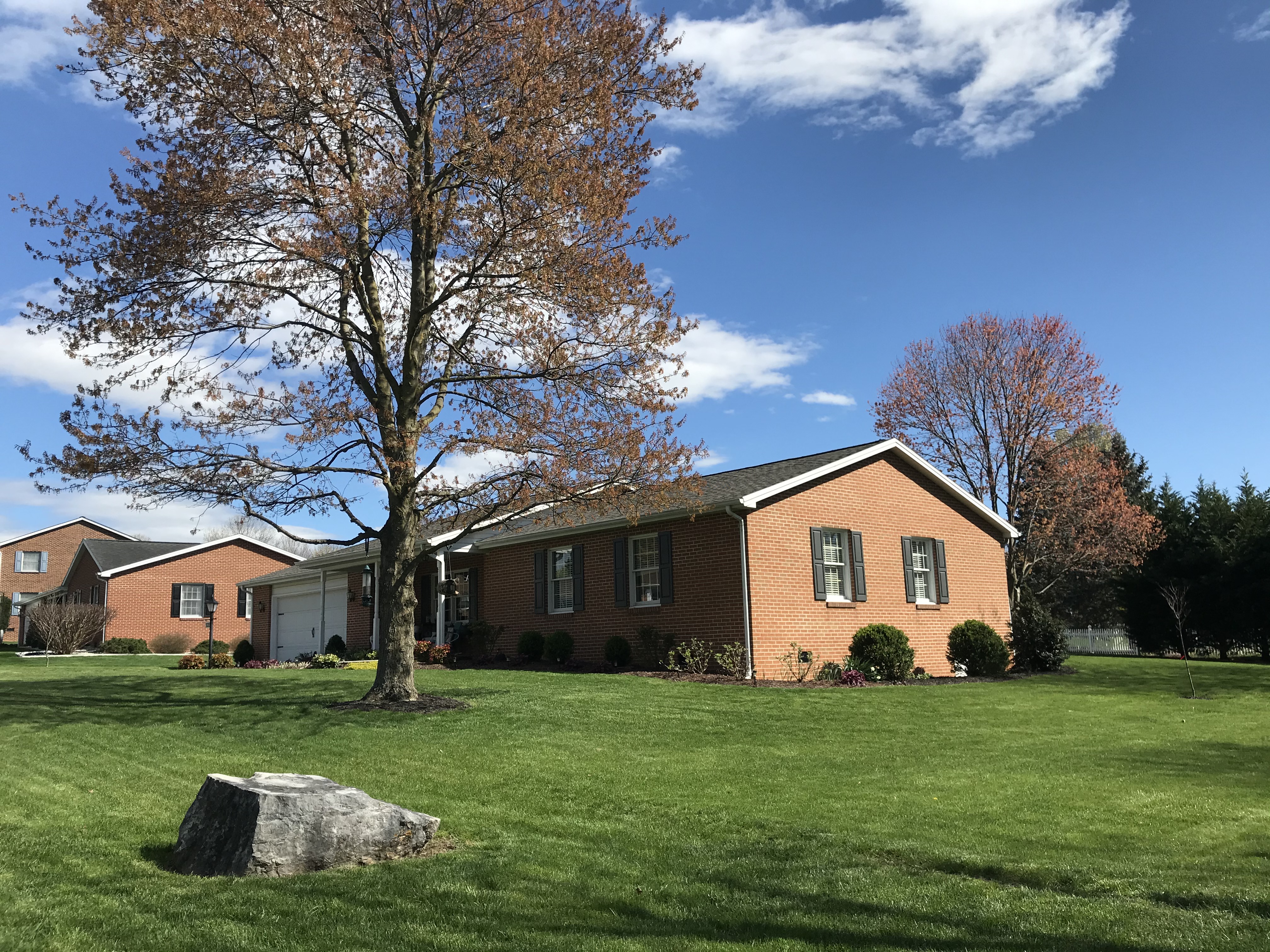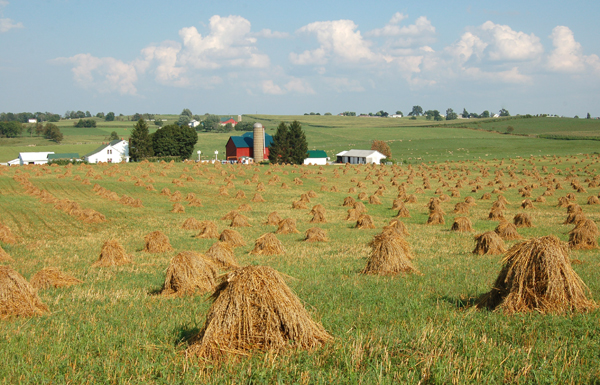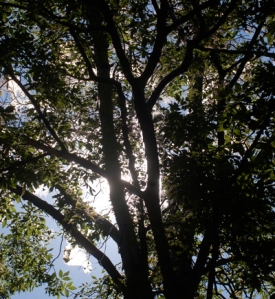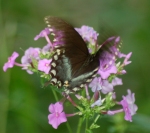
This pair of squirrels was just hanging out in our front yard on a warm spring day recently. While one chowed down on breakfast from a birdfeeder, the other basked in the morning sunshine.
© Bruce Stambaugh 2024

This pair of squirrels was just hanging out in our front yard on a warm spring day recently. While one chowed down on breakfast from a birdfeeder, the other basked in the morning sunshine.
© Bruce Stambaugh 2024

There are advantages to staying home. The obvious, of course, is it lowers your risk of acquiring the coronavirus.
There is another positive upshot of being homebound. It can stimulate our mental psyche. We just need to be observant.
Being retired for a few years now, I quickly grew used to being at home. I thought I knew how to relax and make the best use of my time. The COVID-19 crisis taught me differently.
Having to stay at home, I learned to really pay attention, to simply be thankful, even when the weather was damp and cold. We had a lot of that in April and May all across the eastern U.S. The typically sunny Shenandoah Valley didn’t escape the dullness either.
 I savored the stillness and the lack of interruptions to my new sequestered routines. The steady hum of my wife’s sewing machine transfixed me at times. Altogether, she has made over 700 face masks. Others have made many more and donated them to businesses, medical facilities, agencies who assist the homeless, local institutions, and Mennonite Disaster Service.
I savored the stillness and the lack of interruptions to my new sequestered routines. The steady hum of my wife’s sewing machine transfixed me at times. Altogether, she has made over 700 face masks. Others have made many more and donated them to businesses, medical facilities, agencies who assist the homeless, local institutions, and Mennonite Disaster Service.
Rather than grumble about being at home so much, I tried to appreciate each moment at hand. I would often sit at my desk where I write. I raised the Venetian blinds and observed whatever came into view.
Despite the weather, I saw kids on bicycles, people walking dogs, dogs walking people, delivery trucks, northern cardinals searching for food, American robins bobbing along, and gathering nesting material.
I couldn’t count the number of squirrels that came to dig up their buried food caches. Most of the squirrels are gray busybodies. One particular squirrel, however, stood out.
This squirrel was blond, especially its bushy tail. Its pigmentation had to be an anomaly. The squirrely rodent even acted differently, sometimes like it didn’t have a care in the world.
The sun seemed to bleach the squirrel’s tail as it bounded through neighboring backyards on its way to ours. I had seen the squirrel in late winter searching for morsels beneath our birdfeeders. “Blondie” continued to frequent our yard even after I took down the feeders.
The unusual-looking squirrel felt at home in our maple trees. On the hottest day of the year so far, it stretched out on our green grass, apparently to cool off in the shade of the maple.
Once rested, it returned to its squirrely antics, devouring juicy maple seeds that had just twirled to the ground. Some of its repertoire of poses were almost comical. Its playful personality matched its coloration.
It’s not like the squirrel had it made, however. Other squirrels chased it, not because of its fur color, but because that’s what squirrels do.
The blond always got away unscathed. When the coast was clear, it reappeared looking for food, or another drink, or just to lounge on a crook in the maple tree, taking in the limited sunshine.
I enjoyed the squirrel’s behaviors and resilience. Unlike the gray squirrels, the blond one somehow seemed contented, satisfied, unfettered, detached from the life of the survival of the fittest of all things wild.
There are valuable lessons to be learned from watching this fantastic squirrel. No matter what life throws at you, relax, enjoy each moment, and above all, don’t worry.
© Bruce Stambaugh 2020

By Bruce Stambaugh
With Labor Day upon us, autumn will be right around the corner. In fact, if you look closely, signs of fall are already evident.
Some of the indicators are obvious, others more subtle. Some are predictable with still others seemingly a bit premature.
The days, often the nicest of the summer, have a sly, natural flaw. Day by day, minutes of daylight are silently subtracted from the previous day’s total. By month’s end, daily darkness will outnumber daylight once again.
The sun itself is moving more towards the center of the horizons at sunrise and sunset. Those driving true east and west running roads have already begun to frequently use their sun visors. The fall fogs, too, have clouded crisp mornings, the consequence of cool nights following warm days.
In the fields, the harvesting has begun. My Amish neighbors have long since gathered up the standing army of oats shocks and wheeled them off wagon load after wagon load to the thrasher.
Now it’s the corn’s turn. The field corn seems to have taken on drought status, drying up almost overnight. Brown has overtaken green as the predominant color in the standing sea. Smart farmers have already begun to cut their supply of silage to replenish the silos.

In the woods and along highways, once glossy, emerald leaves have dulled and drooped. Some have already begun to drop without even changing color. Now and again a black walnut can be found standing stark naked, save for the cache of fall webworm nests it has involuntarily collected.
In the gardens, the picking of produce is a daily chore. Cucumbers, onions and tomatoes have hit their peek. Kitchens are cluttered with utensils for canning and freezing. The ripened fruits and vegetables that aren’t consumed at the dinner table find their way into jars and containers.
Even the sounds of the season have changed. Only a few American Robins continue to sing, and most likely they are sophomores practicing for next year’s prom. Instead of gathering nesting materials and snagging worms and insects, parent birds lead their fledglings to watering holes for liquid refreshment and necessary bathing.

The volume and frequency of the cicada and katydid songs have lessoned considerably. Even the crickets have quieted down.

Butterflies of all sizes and colors squeeze whatever nutrients they can out of the fading cornflowers and black-eyed susans. The humming birds, too, seem to sense an urgency to store up extra energy for their upcoming southern vacation travel.
Squirrels are in their glory, cutting as many beechnuts, hickory nuts and walnuts as they can. Thrifty creatures that they are, they also bury future meals for harder times ahead. Only they can’t always remember where they put their stash.
Next spring, when the saplings begin to appear, we will learn just how forgetful the squirrels were. But between now and then, many pleasant days lay ahead, and probably some less than desirable ones, too.
There is yet one more indicator that fall is knocking on our door. Campaign signs have already begun to litter urban, suburban and rural roadsides. They are as prolific and unsightly as the ugly webbed homes of the worms.
The obnoxious yet gaudy campaign posters are a human-induced reminder of what nature is about to bring. Autumn will be here before we know it, and there is little we can do about it except to enjoy the ever-changing colorful show.
Wildlife photos from the Chesapeake Bay region
Culture and Communities at the Heart Of India
Artist and nature journalist in the Shenandoah Valley of Virginia.
Photographer Of Life and moments
Personal Blog
Art is the only way to run away without leaving home. -Twyla Tharp
Writing generated from the rural life
writer. teacher. podcast cohost.
El amor cruza fronteras / Love crosses borders
You must be logged in to post a comment.